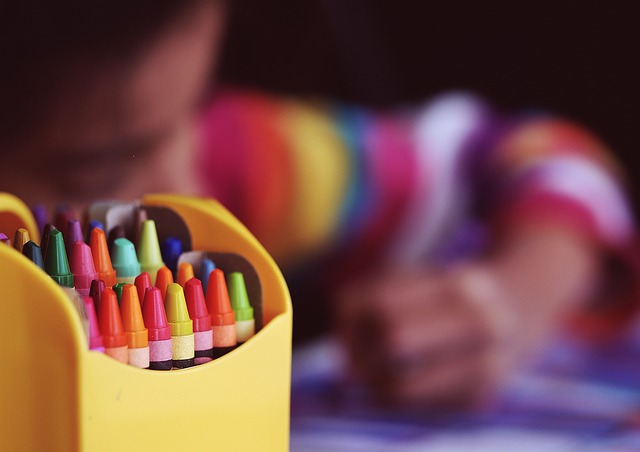With the summer season approaching and bringing with it blue skies and a vast array of colourful flowers, you’ve probably felt the effect of the bright colours on your mood. You may feel happier and generally more positive. But what effects could colour have in a classroom or learning environment?
At a young age we start to associate colours by developing memory, for example, learning that a green banana is not yet ripe, the yellow banana is the ripest and a brown banana is at the end of the ripeness spectrum. By understanding the colour spectrum we are able to recognise its meaning and effects, becoming a vital part of our learning as youngsters.

Children spend the majority of their day in the classroom where colour can be used to enhance and influence their learning. Educators and supply teachers that are passionate about inspiring children can help increase engagement in the classroom by using colour in five easy and effective ways. Take a read below.
-
What Effect Does Colour Have?
Colour affects your learning by the way your brain functions and uses colour to develop pattern recognition, memory and absorbing new information. It can also visually guide you to locate, compare, understand and recall information faster. In particular, colour affects children’s moods, their behaviour, and educational performance. Here are a few colours and how they can influence learning:
RED – Powerful and attention-grabbing, the colour red creates alertness and excitement. It encourages creativity and can also increase appetite.
BLUE – Suggests calmness, loyalty, peace, serenity, and security, therefore creates a sense of comfort.
YELLOW – Encourages creativity, clarity, and optimism, thus creates positive feelings and improves attention.
GREEN – The colour green symbolises nature and the natural world. It represents balance, growth, tranquillity, cleanliness and calmness. It also can relieve stress and provide a sense of healing.
ORANGE – Considered an energetic colour and similar to red, can increase alertness. Orange creates passion, warmth, excitement and encourages communication.
PINK – Associated with love, romance, nurture, warmth, calmness. and imagination.
-
Using Colour to Direct Attention
Colour has great importance in enhancing memory performance and one’s visual sense in order to achieve a positive response towards learning. Therefore using colours to emphasise a particular feature or piece of work can increase the attention level of learners: it can also help reduce boredom and increase attention spans.
However, too much use of colour can over-stimulate instead of inspire, so you’ll need to ensure a good balance between bold and neutral colours. The most attention-grabbing colours are warm colours such as red, orange and yellow. Educators need to use more attention-grabbing colours to encourage learning, focus, alertness, and awareness. Cooler colours, such as blue and green tones, can evoke calmness which will stimulate concentration, broader thinking, and conversation.
-
Implementing Colour Strategically
Colour can enhance the clarity in text by as much as 40%, so it’s important that the learning outcome is achieved by using colour effectively. Strong, bright and bold colours should be used sparingly or with a neutral background to avoid attracting the eye in many directions, thus risking the message becoming lost in the text. Colour can inform and, by improving readability, can help children better understanding the concept of the text they are reading. Use lighter backgrounds that contribute to a higher readability level.
You should consider how you can utilise and implement colour in the classroom itself. For example, providing a quiet place for children in a busy playroom: using shades of soft blues, starry night ceiling and a door that only small people can access. The blue tones can encourage calmness, security, comfort, and peace. This, in effect, can lessen inappropriate behaviour as the children are able to learn to diffuse and deal with their feelings as they take themselves out of situations and relax in the quiet space provided to them.
-
Colour and Special Educational Needs
Colour can affect all children differently with regards to their mood and behaviour, in particular. those who are sensitive towards colour or struggle with their vision. Children with Autism Spectrum Disorder (ASD) can become stressed by colour and patterns. The choice of colour surrounding them can affect their behaviour, therefore it is essential to create a warm, but not over-stimulating, environment. The level of stimulation should be controlled as autism can typically be affected through extreme sensitivity to the sensory stimulation of sound, light and colour: it’s important to create an appropriately colourful environment for children with ASD.
Colour can be used to support children who are partially sighted. Colours that contrast and provide differentiation between surfaces can help with the perception of size or judging the distance between objects or space. It’s important to understand the level of intensity of the use of a colour particularly for easy identification of different classrooms.
-
Coloured Furniture in the Classroom
Research has revealed a well-designed classroom can boost learning progress by 16% in reading, writing and maths. Schools or education centres do not often use light coloured furniture because it makes the dirt easy to spot. However, through both research and practical application, it has become clear that colour can have an effect on children’s mood and emotions in a learning environment. It is essential to let the purpose of the room guide the colour scheme selection whether that’s Science, English, Maths or even creating ELearning Spaces to encourage learning. Be creative with the chairs, tables, bookcases, boards, trays, even the carpet and walls to differentiate the importance of each classroom.
